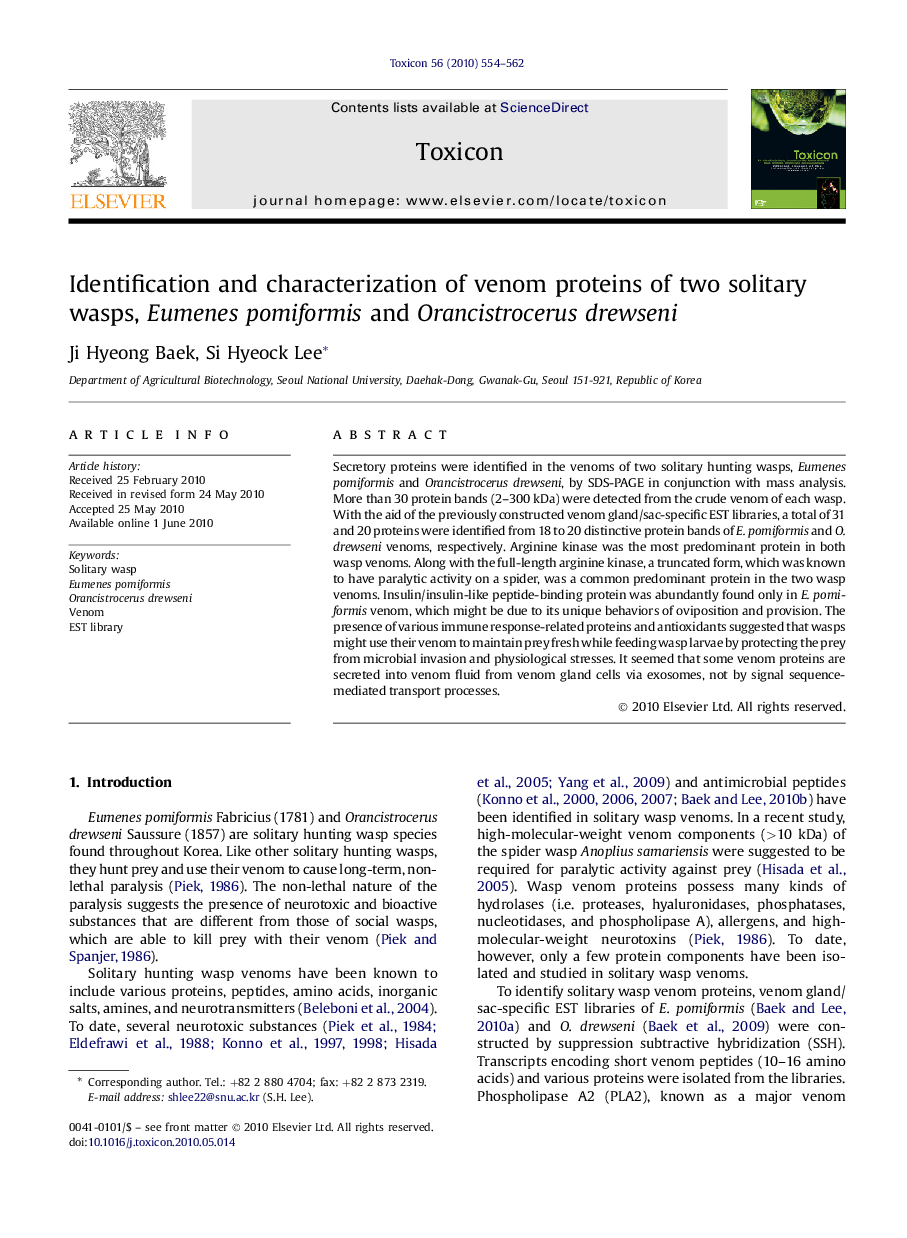| کد مقاله | کد نشریه | سال انتشار | مقاله انگلیسی | نسخه تمام متن |
|---|---|---|---|---|
| 2065133 | 1076906 | 2010 | 9 صفحه PDF | دانلود رایگان |

Secretory proteins were identified in the venoms of two solitary hunting wasps, Eumenes pomiformis and Orancistrocerus drewseni, by SDS-PAGE in conjunction with mass analysis. More than 30 protein bands (2–300 kDa) were detected from the crude venom of each wasp. With the aid of the previously constructed venom gland/sac-specific EST libraries, a total of 31 and 20 proteins were identified from 18 to 20 distinctive protein bands of E. pomiformis and O. drewseni venoms, respectively. Arginine kinase was the most predominant protein in both wasp venoms. Along with the full-length arginine kinase, a truncated form, which was known to have paralytic activity on a spider, was a common predominant protein in the two wasp venoms. Insulin/insulin-like peptide-binding protein was abundantly found only in E. pomiformis venom, which might be due to its unique behaviors of oviposition and provision. The presence of various immune response-related proteins and antioxidants suggested that wasps might use their venom to maintain prey fresh while feeding wasp larvae by protecting the prey from microbial invasion and physiological stresses. It seemed that some venom proteins are secreted into venom fluid from venom gland cells via exosomes, not by signal sequence-mediated transport processes.
Journal: Toxicon - Volume 56, Issue 4, 15 September 2010, Pages 554–562